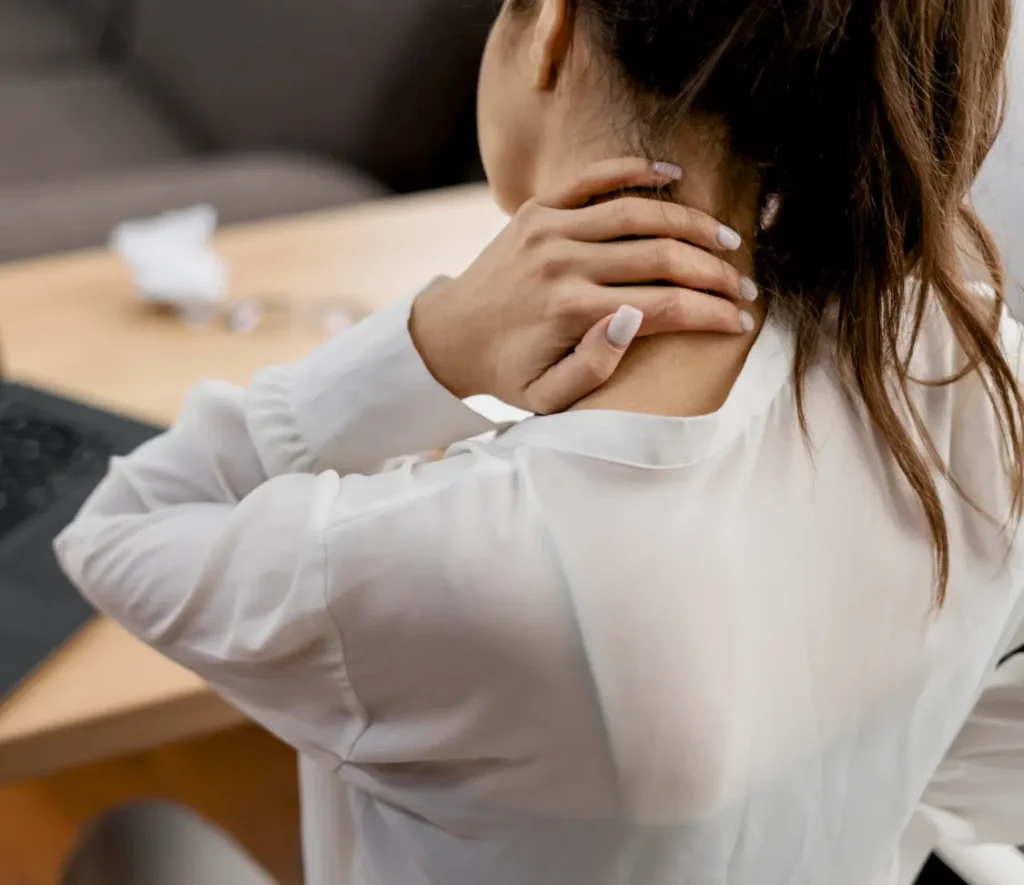A cervical herniated disc occurs when the soft inner material of a spinal disc in the neck pushes through a tear in the disc’s tough outer layer. This herniation can press on nearby spinal nerves or the spinal cord itself, causing neck pain, arm pain, numbness, and even muscle weakness.
Herniations in the cervical spine are most commonly found between the C5–C6 and C6–C7 levels. The condition can develop gradually due to aging and disc degeneration, or suddenly due to trauma or strain.
Causes and Risk Factors
- Age-related disc degeneration
- Sudden trauma or neck injury (e.g., car accident, fall)
- Repetitive strain or poor posture (desk work, manual labor)
- Smoking and genetic predisposition
- Common in people aged 30–60
Symptoms
- Neck pain that may radiate into the shoulder, arm, or hand
- Tingling or numbness in fingers or forearm
- Muscle weakness in the biceps, triceps, or hand grip
- Limited neck mobility or stiffness
- Headaches, often at the base of the skull
- In severe cases: balance issues or coordination problems
Diagnosis
- Clinical examination with strength, sensation, and reflex testing
- MRI: Best tool for visualizing disc herniation and nerve compression
- X-rays: Evaluate spinal alignment and degenerative changes
- EMG/Nerve conduction studies: Assess nerve function if symptoms are unclear or persistent
Treatment
Non-Surgical Treatment
- Rest and avoidance of activities that worsen symptoms
- NSAIDs, oral steroids, or nerve pain medications
- Physical therapy for posture correction, mobility, and strengthening
- Cervical traction or soft collar use in select cases
- Epidural steroid injections for persistent radiating pain
Surgical Treatment
- Reserved for patients with severe, progressive, or unresponsive symptoms
- Anterior Cervical Discectomy and Fusion (ACDF): Removes the damaged disc and fuses the vertebrae
- Cervical Disc Replacement: Maintains motion, suitable for younger patients
- Posterior Discectomy: Used in specific lateral herniations
Recovery Timeline
- Conservative treatments may resolve symptoms within 6–12 weeks
- Post-surgical patients typically resume light activities in 2–4 weeks
- Physical therapy begins shortly after surgery
- Full return to work or sport in 2–3 months depending on healing
Expert Treatment at Kerlan Jobe Institute
At Kerlan Jobe Institute, our spine specialists offer expert diagnosis and personalized treatment plans for cervical disc herniations. Whether through conservative care or advanced surgical techniques, our goal is to relieve nerve pressure, restore function, and help patients return to an active life with minimal discomfort or risk of recurrence.

